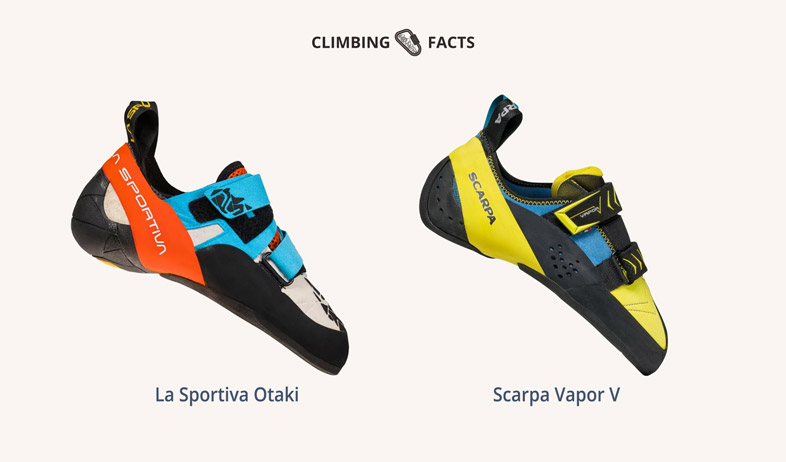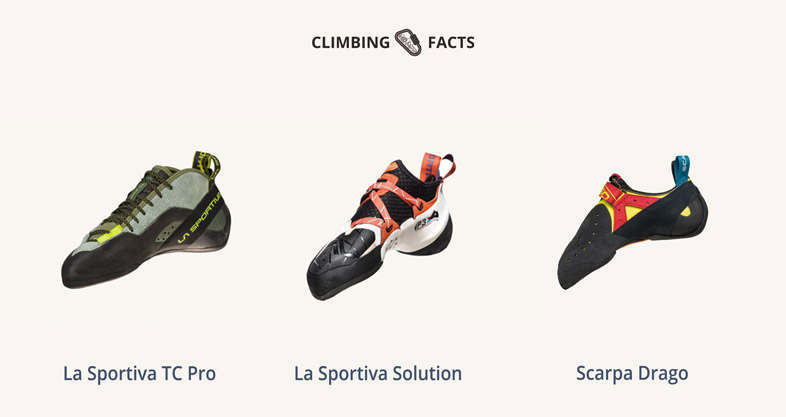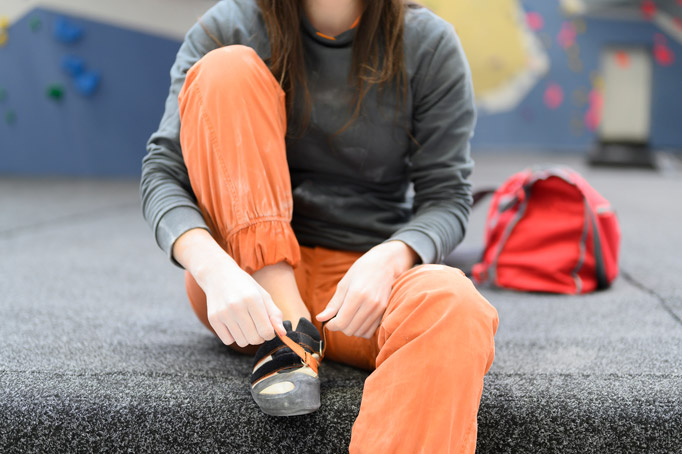You may have seen videos on youtube or posts on Reddit of professional climbers showcasing their climbing shoe collection. Oftentimes, they have a ton of shoes to show you, in all different shapes and sizes. And it may have made you think: do you need more than one pair of climbing shoes? And if so, how many pairs do you really need?

How many pairs of climbing shoes you need, will depend on a range of factors.
What is the ideal number of climbing shoes to own?
Ideally, a climber who enjoys multiple styles of climbing (trad, sport, bouldering) and wants to excel at a high level, will have a pair of shoes designated for each style.
So if you climb both trad and sport, you ideally have at least 2 different climbing shoes as these styles require different types of climbing shoes.
Add bouldering to the mix, and specifically indoor bouldering, and you might be looking at 3 different pairs of climbing shoes.
Some climbers even have additional, cheaper shoes designated for training days. So there’s your answer. Ideally, you will have one pair of climbing shoes for every style of climbing you dabble in.
Why spend money on multiple climbing shoes?
You might think multiple climbing shoes are a waste of money, but this isn’t actually the case. If you have a different pair of climbing shoes for trad climbing and a different pair of climbing shoes for bouldering then you are also splitting the wear on these shoes.
While a typical climbing shoe lasts up to 6 months, if you have two pairs of climbing shoes, you might get 12 months out of both of them.
This is especially true if your main climbing shoes are on the soft side. These shoes already wear out quickly, you don’t want to get mediocre performance out of them on longer, vertical routes only for them to wear out on you faster. Instead, you should get a stiffer pair of shoes for trad climbing.
How many pairs of climbing shoes do you need?
To figure out how many pairs of climbing shoes you need, we need to look at a number of factors.
First I’d like to say, if you are a beginner climber, you only need one pair of climbing shoes. Beginner shoes are stiff, durable, and work well for every style of climbing. As a beginner, you simply don’t have the experience yet to get much out of climbing shoes so you really don’t want to waste your money on buying different pairs.
So that leaves the intermediate and advanced levels of climbers.
If you consider yourself an intermediate climber, you are likely only dabbling in one or two climbing styles at most. In this case, you can easily go for an all-around climbing shoe that excels well in both styles.
Examples are the Scarpa Vapor V and the La Sportiva Otaki, these climbing shoes work well in both bouldering and sport climbing.

Both have a flexible midsole and a stiffer outsole, making them good at smearing on big volumes as well as edging on smaller footholds. These are also ideal intermediate shoes.
Next up we have the advanced climber. If you are at this level of climbing, you’ll want to look into specialized performance shoes for each style of climbing that you pursue.
For example, you might want to go for a pair of La Sportiva TC Pros or Scarpa Maestros for trad climbing, a pair of La Sportiva Solutions for sport climbing, and a pair of Scarpa Drago’s for your bouldering needs.

Or you could stick to just two pairs and have some stiff TC Pros for trad climbing and medium-stiff Solutions for bouldering and sport climbing.
Conclusion
Hopefully, that answered your question. Most beginners and intermediate climbers are completely fine with one pair of climbing shoes that can perform well on multiple styles of climbing. If you are an advanced or expert level climber, however, you’ll benefit from having a performance shoe that is designed for each individual style of climbing. This way, you will get the most out of your climbing shoes.
Continue Reading
More articles on Climbingfacts
- Indoor Bouldering Basics: intro to gym climbing
- Tips for short climbers
- Complete Guide to Bouldering Grades (& conversions)
- How to start and finish a boulder problem
- Can I get abs from climbing?
- Bouldering vs rock climbing
- How often you should go bouldering per week
- Why bouldering is a good full-body workout
- Climbing 101: what is cutting feet?
- How long does it take to progress in bouldering?
- How much does it cost to start bouldering?
- What to wear indoor bouldering
- How much of a bouldering wall can you use?
- Should climbing shoes hurt?
- How many climbing shoes do you really need?
- Yoga for climbers
- Core workout for climbers
